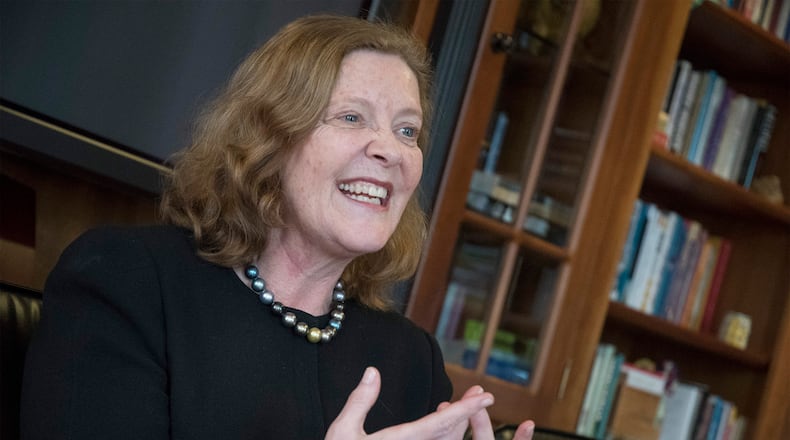Claire Sterk, who will be inaugurated as Emory University president Feb. 8, revealed in a letter published Tuesday that Emory will not be a “sanctuary campus” for immigrants.
“Declaring ourselves a sanctuary campus not only lacks substantive meaning for policy and practice, but also sends a message that is interpreted inconsistently across the country,” Sterk wrote.
The letter goes on to say that a declaration of sanctuary could hurt funding for teaching, education and research and would lead some to incorrectly assume that the university was making a commitment to disobey federal law. Emory, the letter states, adheres to all applicable laws.
Sterk's letter follows a November petition signed by more than 1,500 Emory faculty, students, staff, alumni and community members. The petition demanded that Emory prohibit Immigration and Customs Enforcement (ICE) from carrying out enforcement actions on campus and university facilities, withhold the immigration status of current undocumented students from ICE agents and implement other measures to make Emory "a sanctuary for higher learning for undocumented individuals."
Emory admits and provides financial assistance to undocumented students, including students who qualify for Deferred Action for Childhood Arrivals (DACA), a program the Obama administration started in 2012 that defers their removal from the country.
In an interview with The Atlanta Journal-Constitution Tuesday, Sterk explained the university’s decision not to declare itself a sanctuary campus.
“What I think we’re all learning is that being a sanctuary is symbolically important, but it doesn’t really provide cover or protection in any way,” Sterk said. “We’re not going to make an ideological statement, but we’re going to focus on the practical issues.”
Emory will add to its existing programs to support its undocumented students, Sterk said. It will provide free services by immigration lawyers and financial aid to undocumented students and pledges not to share confidential student records (which show immigration status) unless subpoenaed.
Emory draws students from more than 100 countries, a point of pride for Sterk, who emigrated from the Netherlands.
“I came to the United States because I saw what this country could do, and I was very attracted by the values of the drivers of the community,” she said. “That’s true for so many people. That’s not going away.”
Sterk has four priorities for the school, which serves 15,000 students and is the second-largest private employer in the Atlanta area. She wants deeper engagement with Atlanta, to strengthen academic excellence and global health innovation and to enhance the impact of the Woodruff Health Sciences Center. She clarified these priorities in her interview with the AJC.
Deepening ties with Atlanta is critical for Sterk.
“I believe it is going to serve Emory extremely well and Atlanta extremely well,” Sterk said. “I talk about Emory being a global research university, and Atlanta is the gateway to the world.”
Atlanta’s many public health organizations (from the Carter Center to the Centers for Disease Control and Prevention), its many Fortune 500 companies and the world’s busiest airport make it an ideal hub from which to engage the world, Sterk said.
Deepening ties to Atlanta may include connecting a MARTA line to Emory.
“I believe it could have tremendous advantages,” she said. “If there were a MARTA line, it would allow for many people (to have) easier access to an area where so many of the employment opportunities are. It also means people will have access to the care that takes place.”
There are financial obstacles to adding a MARTA line and many stakeholders involved, Sterk noted.
Sterk is excited about Emory’s potential as a leader in global health, especially through its project examining childhood mortality and morbidity.
“We have this great expertise at Emory and other places to really make significant contributions to children’s health.”
About the Author
Keep Reading
The Latest
Featured

